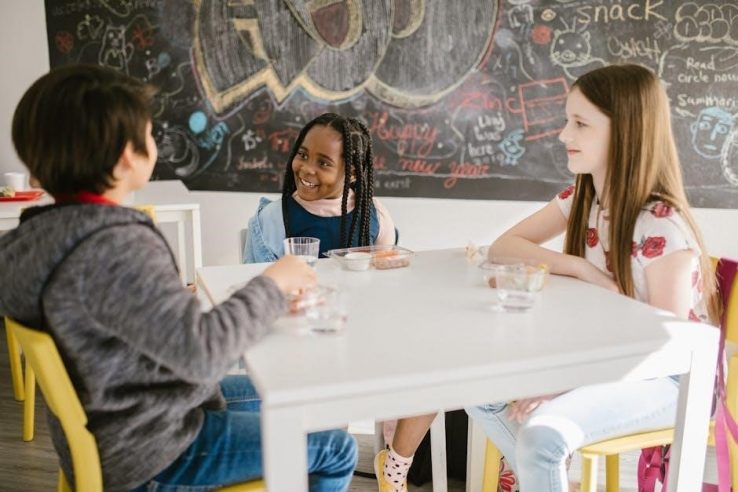Black History Month is celebrated annually in February to honor the achievements and contributions of Black individuals throughout history. It promotes cultural awareness and inclusion among students, fostering empathy and understanding. By engaging in age-appropriate activities, elementary students can explore the rich history and heritage of Black communities, shaping their perspectives on diversity and equality.
1.1 Importance of Celebrating Black History Month
Celebrating Black History Month is essential for educating students about the contributions and experiences of Black individuals. It fosters inclusion, empathy, and cultural awareness, helping students understand the significance of diversity. By exploring historical achievements and challenges, young learners develop a deeper appreciation for the rich heritage of Black communities. These lessons not only promote equality but also inspire future generations to value and celebrate differences, creating a more inclusive and compassionate society.
1.2 Brief Overview of Black History Month
Black History Month is an annual celebration honoring the achievements and contributions of Black individuals throughout history. Originating from Negro History Week in 1926, it expanded into a full month in the 1960s. Celebrated in February in the U.S. and Canada, it highlights the rich cultural heritage and resilience of Black communities. The month serves as a time to reflect on historical challenges, recognize progress, and educate future generations about the significance of Black history and its impact on society.
Educational Activities for Elementary Students
Educational activities for elementary students during Black History Month include interactive lessons, storytelling, and hands-on projects that introduce young learners to Black culture, history, and contributions.
2.1 Interactive Lessons on Prominent Black Historical Figures
Interactive lessons introduce elementary students to influential Black figures like Martin Luther King Jr., Harriet Tubman, and Madam C.J. Walker. Teachers use storytelling, role-playing, and multimedia presentations to bring their stories to life. Students create timelines, write biographies, or design posters highlighting their contributions. These activities make history relatable and engaging, fostering a deeper understanding of their impact on society. Such lessons inspire young learners to embrace diversity and take pride in the achievements of these trailblazers.
2.2 Age-Appropriate Reading Lists for Black History Month
Curating age-appropriate reading lists for elementary students is essential for teaching Black History Month. Books like The Story of Ruby Bridges and Martin’s Big Words introduce young learners to key figures and events. These stories highlight courage, resilience, and contributions of Black individuals. Reading lists should include diverse voices, such as The Watsons Go to Birmingham and Let’s Read About… Rosa Parks. Such selections foster empathy, understanding, and a connection to Black culture and history, making learning engaging and meaningful for young minds.
2.3 Classroom Discussions on Diversity and Inclusion
Classroom discussions on diversity and inclusion are vital for fostering empathy and understanding during Black History Month. Teachers can lead structured conversations about equality, unity, and the importance of diverse perspectives. Activities like think-pair-share or group discussions encourage students to express their thoughts respectfully. These talks help create an inclusive environment, teaching students to appreciate differences and celebrate shared humanity. Connecting discussions to Black history highlights the ongoing relevance of equality and justice, preparing young learners to embrace diversity in all aspects of life.
Creative Activities for Young Learners
Creative activities, like art projects, music, and writing assignments, foster creativity and cultural appreciation, empowering students to engage deeply with Black history and its significance.
3.1 Art Projects Inspired by Black Culture
Art projects inspired by Black culture allow students to creatively explore and appreciate the rich heritage of African American communities. Activities like painting, collage-making, and crafting traditional African patterns help students connect with historical and contemporary Black artists. These projects foster creativity while teaching about influential figures and cultural symbols, making learning interactive and engaging. Teachers can also incorporate discussions about the significance of specific art styles, fostering a deeper understanding of Black contributions to the arts.
3.2 Music and Dance Performances Highlighting Black Contributions
Music and dance performances are powerful ways to highlight Black cultural contributions. Students can learn and perform iconic Black musical genres like jazz, blues, and hip-hop, while exploring the history behind them. Traditional African dances and modern choreography can also be incorporated, showcasing the diversity of Black expression. These performances not only entertain but also educate, fostering appreciation for the rich cultural legacy of Black communities and their enduring impact on global music and dance.
3.3 Writing Assignments on Black Heroes and Their Achievements
Writing assignments offer students the chance to reflect on and celebrate Black heroes. Elementary students can write biographical sketches of figures like Martin Luther King Jr. or Rosa Parks, or craft short stories inspired by their achievements. Assignments can also include reflective essays on how these heroes’ contributions impact their lives. Such activities foster critical thinking, creativity, and a deeper understanding of Black history, while encouraging students to connect personally with these inspiring stories.

Community-Based Activities
Community-based activities engage students in cultural experiences through local events, guest speakers, and collaborations, fostering connections and cultural pride in Black heritage.
4.1 Organizing School Events to Celebrate Black History Month
School events are a great way to engage students and the community in Black History Month celebrations. Consider hosting assemblies, workshops, or cultural fairs that highlight Black history and achievements. Invite local performers, artists, or historians to share their insights. Students can participate in talent shows, poetry recitals, or reenactments of historical events. These events foster unity and provide hands-on learning experiences. Encourage student leadership in planning to empower them and create a sense of ownership. Make sure to promote diversity and inclusion throughout the activities.
4.2 Inviting Guest Speakers from the Black Community
Inviting guest speakers from the Black community enriches students’ learning experience during Black History Month. These speakers can share personal stories, historical insights, or cultural traditions, providing authentic perspectives. Students gain a deeper understanding of Black heritage and contributions. Interactive Q&A sessions can foster engagement and curiosity. Guest speakers also inspire students by sharing their achievements and challenges, promoting role models and a sense of pride. This practice builds connections between the school and the community, fostering diversity and inclusion.
4.3 Collaborating with Local Organizations for Workshops
Collaborating with local organizations for workshops offers students enriching, hands-on learning experiences during Black History Month. These organizations often provide resources, expertise, and interactive activities tailored for young learners. Workshops might include cultural performances, art projects, or historical reenactments, making learning engaging and memorable. This partnership also strengthens community ties and provides students with diverse perspectives. By involving local organizations, schools can create immersive experiences that deepen students’ understanding of Black history and culture, fostering appreciation and inclusivity in a collaborative environment.
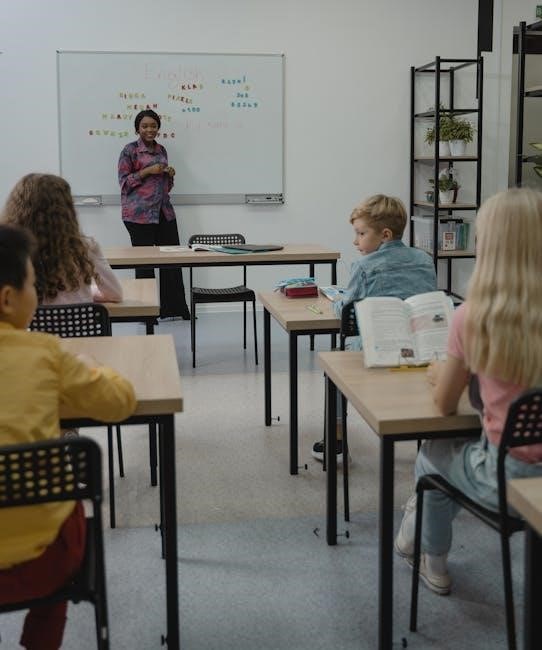
Technology-Integrated Activities
Technology-integrated activities enhance learning by incorporating digital tools, such as interactive timelines, virtual field trips, and multimedia presentations, to engage students in Black History Month studies creatively and effectively.
5.1 Using Educational Apps to Teach Black History
Educational apps like Khan Academy, Duolingo, and History Here offer interactive lessons and games that make learning about Black History engaging for elementary students. These apps feature timelines, quizzes, and stories about key figures, allowing students to explore Black culture and contributions in a fun, digital format. They also provide teachers with structured lessons and activities, making it easier to integrate Black History Month into the curriculum while keeping young learners entertained and informed.
5.2 Creating Digital Presentations on Black History Topics
Students can create digital presentations using tools like Google Slides or Canva to explore Black History topics. These presentations can include images, videos, and key facts about influential figures like Martin Luther King Jr. or Harriet Tubman. This activity enhances research skills and allows students to creatively share their understanding of Black History. It also fosters collaboration and confidence as they present their work to the class, making learning interactive and engaging for young minds.
5.3 Online Games and Quizzes for Interactive Learning
Engage students with online games and quizzes that teach Black History in a fun, interactive way. Platforms like Kahoot! or Quizlet offer pre-made games focused on historical figures, events, and cultural contributions. These tools make learning dynamic and accessible for elementary students. Quizzes can reinforce facts about Black History, while games like trivia challenges encourage teamwork and healthy competition. This approach not only educates but also keeps young learners excited about exploring Black History Month topics.
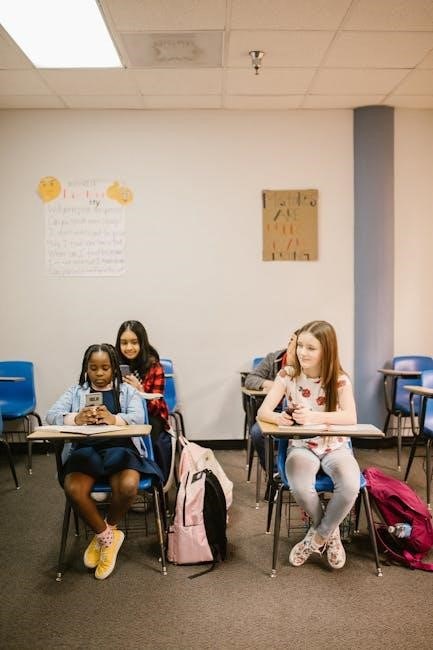
The Importance of Black History Month Activities
Black History Month activities foster cultural awareness, empower students through role models, and create an inclusive classroom environment, enriching their learning and personal growth.
6.1 Raising Cultural Awareness Among Students
Black History Month activities play a crucial role in raising cultural awareness among elementary students. By introducing them to diverse backgrounds and experiences, these activities foster empathy and understanding. Interactive lessons and discussions highlight the contributions of Black individuals, promoting a broader perspective of history. This exposure helps students recognize and appreciate the richness of different cultures, combating stereotypes and fostering respect. Engaging young learners in meaningful ways ensures they develop a strong foundation for lifelong cultural appreciation and inclusive behavior.
6.2 Empowering Students Through Historical Role Models
Black History Month activities empower students by introducing them to historical role models who overcame challenges and achieved greatness. These figures inspire young learners to embrace their potential and pursue their goals with determination. By studying trailblazers like Martin Luther King Jr., Harriet Tubman, and Maya Angelou, students gain confidence and a sense of pride. These stories teach resilience, leadership, and the importance of standing up for equality, fostering a mindset that encourages students to make a positive impact in their own communities.
6.3 Fostering an Inclusive Classroom Environment
Black History Month activities help create an inclusive classroom by celebrating diverse backgrounds and perspectives. Students learn to appreciate the contributions of all cultures, breaking down stereotypes and fostering mutual respect. Interactive lessons and discussions encourage empathy and understanding, while collaborative projects promote teamwork. This inclusive environment allows students to feel valued and connected, creating a sense of belonging. By integrating diverse voices and experiences, educators build a foundation for equality and unity, enriching the classroom culture for everyone.
Resource Materials for Teachers
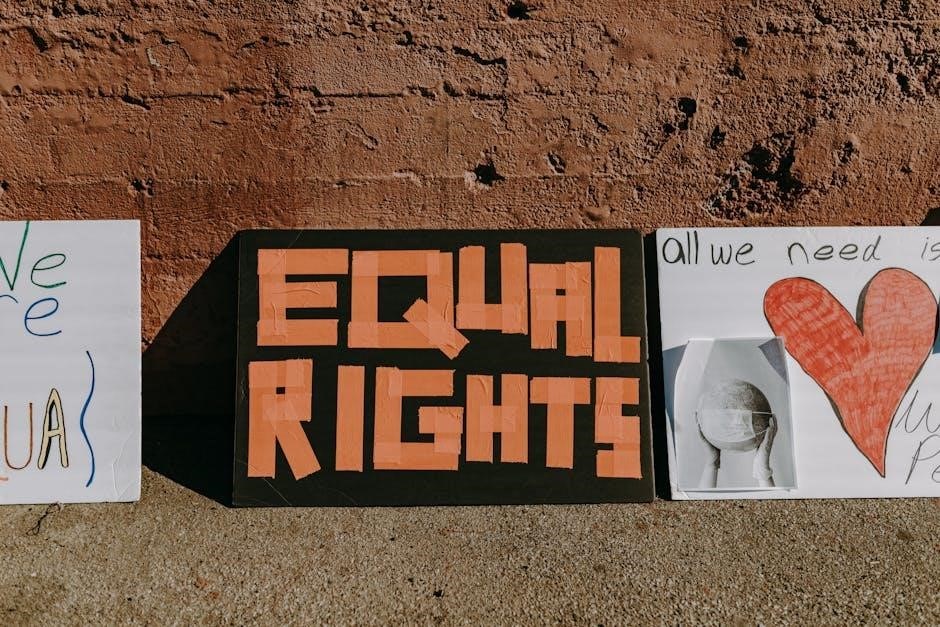
Resource materials for teachers include eBooks, printable worksheets, and lesson plans tailored for elementary students, providing structured and engaging Black History Month activities.

7.1 Recommended eBooks and PDF Guides for Black History Month
Recommended eBooks and PDF guides for Black History Month offer engaging lesson plans, activity ideas, and biographies of influential Black figures. These resources provide teachers with structured content, including age-appropriate reading materials, crafts, and multicultural exercises. Popular guides like “Celebrating Black History Month” and “Teaching Black History Month” are available online. These materials often include interactive elements like puzzles, quizzes, and discussion prompts to keep young learners engaged. They are easily accessible on educational websites and platforms offering free downloads for teachers.
7.2 Printable Worksheets and Activity Sheets
Printable worksheets and activity sheets are excellent tools for engaging elementary students during Black History Month. These resources often include crossword puzzles, word searches, coloring pages, and matching games that focus on Black history. Many websites offer free downloadable PDFs with age-appropriate activities that align with curriculum goals. These sheets help reinforce lessons on prominent figures, cultural traditions, and historical events. They also provide hands-on learning opportunities, fostering critical thinking and creativity while keeping students entertained and informed.
7.3 Lesson Plans and Teacher’s Guides
Lesson plans and teacher’s guides are invaluable resources for educators planning Black History Month activities. These materials provide structured outlines, learning objectives, and step-by-step instructions for integrating Black history into the curriculum. Many guides include age-appropriate activities, discussion points, and assessment tools tailored for elementary students. They often feature diverse topics, from historical figures to cultural contributions, ensuring a comprehensive and engaging learning experience. These resources also align with educational standards, making them reliable tools for teachers aiming to create meaningful and impactful lessons.
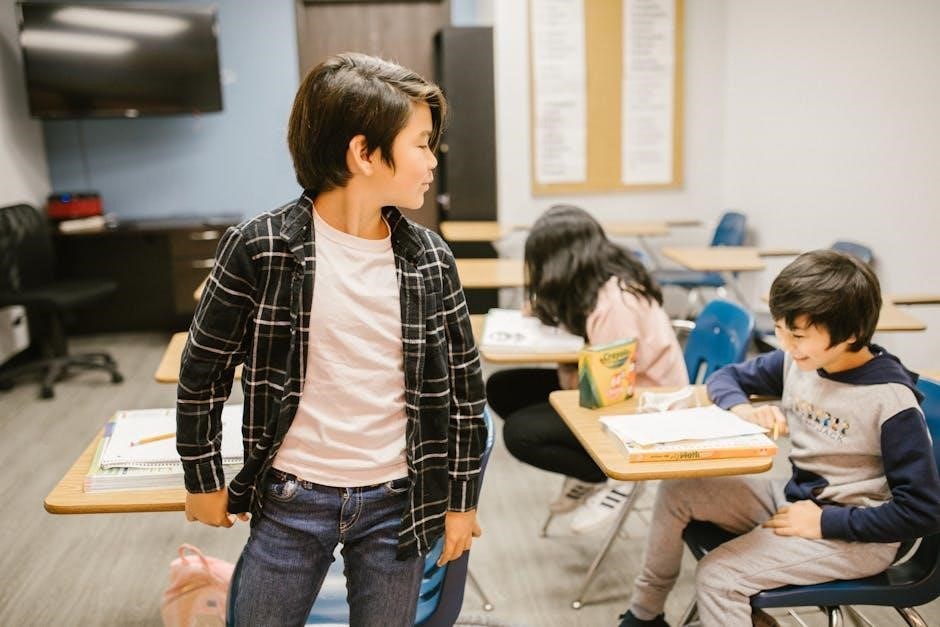
How to Plan Black History Month Activities
Align activities with learning goals, engage students with hands-on experiences, and involve parents and the community for a meaningful celebration of Black History Month.
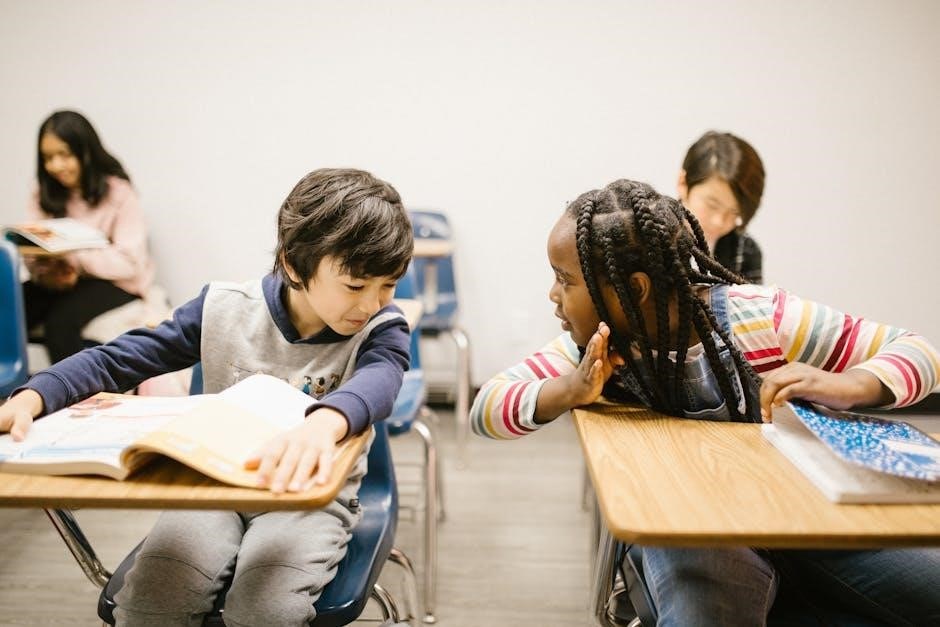
8.1 Aligning Activities with Curriculum Standards
When planning Black History Month activities, ensure they align with curriculum standards to maintain educational relevance. Integrate lessons with social studies, reading, and writing goals. Use historical figures and events to teach critical thinking and cultural awareness. Incorporate age-appropriate materials, such as biographies of Black leaders, into reading lists. Align art and music projects with creativity and history standards. This approach ensures activities are both engaging and academically purposeful, fostering a deeper understanding of Black history while meeting educational objectives.
8.2 Engaging Students with Hands-On Experiences
Hands-on activities make learning about Black History Month interactive and memorable for elementary students. Use reenactments of historical events, craft projects inspired by African-American culture, and science experiments tied to Black inventors. These experiences help students connect with the material on a deeper level. Incorporate tactile learning, such as creating murals or writing timelines, to make history relatable. Active participation fosters curiosity and retains knowledge effectively.

8.3 Involving Parents and the Community
Involving parents and the community enriches Black History Month activities for elementary students. Schools can collaborate with local organizations to host cultural events, workshops, and fairs. Parents can share their experiences or volunteer for classroom activities. Community members, such as historians or artists, can provide unique insights. This collective effort fosters a supportive environment and strengthens connections between home and school, enhancing students’ learning experiences.

Challenges and Solutions
Challenges include limited resources and time constraints. Solutions involve collaborating with communities, integrating activities into curricula, and using digital tools to enhance engagement and accessibility.
9.1 Addressing Time Constraints for Comprehensive Lessons
Time constraints can hinder the depth of Black History Month lessons. To address this, teachers can integrate activities into existing curricula, such as incorporating relevant stories during reading time or connecting historical figures to math problems. Focusing on key figures and events ensures meaningful learning even with limited time. Utilizing pre-prepared resources, like lesson plans and activity sheets, saves time and ensures comprehensive coverage. Prioritizing interactive and engaging activities helps maintain student interest while fitting within tight schedules.
9.2 Ensuring Cultural Sensitivity in Activities
Ensuring cultural sensitivity is crucial when planning Black History Month activities. Teachers should involve the Black community in planning to guarantee authentic representation. Avoid stereotypes by focusing on diverse Black experiences and contributions. Use vetted resources and preview all materials to ensure respect and accuracy. Encourage open discussions where students can ask questions and share thoughts. Foster a respectful environment by emphasizing inclusivity and the value of diverse perspectives. This approach ensures activities are meaningful and culturally sensitive, promoting a positive learning experience for all students.
9.3 Keeping Students Engaged and Interested
To keep students engaged, incorporate interactive and hands-on activities that align with their interests. Use storytelling, role-playing, and technology to make learning fun. Integrate music, art, and movement to cater to different learning styles. Encourage student-led projects, such as creating timelines or presenting on Black heroes. Recognize and celebrate student efforts to boost motivation. Incorporate games and competitions that teach historical facts in an exciting way. These strategies ensure students remain active participants and develop a genuine interest in Black History Month.
